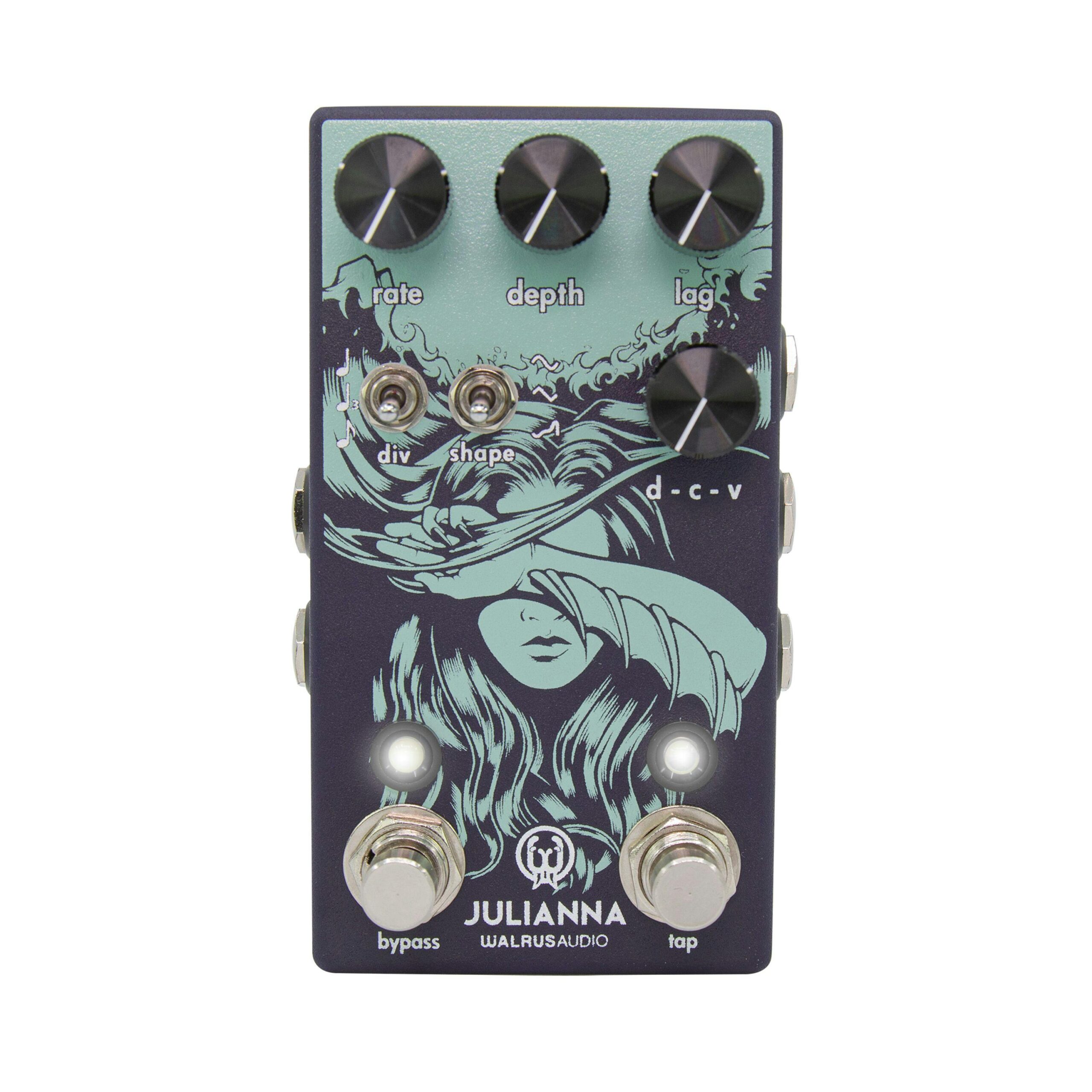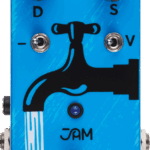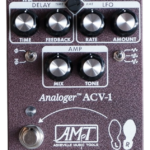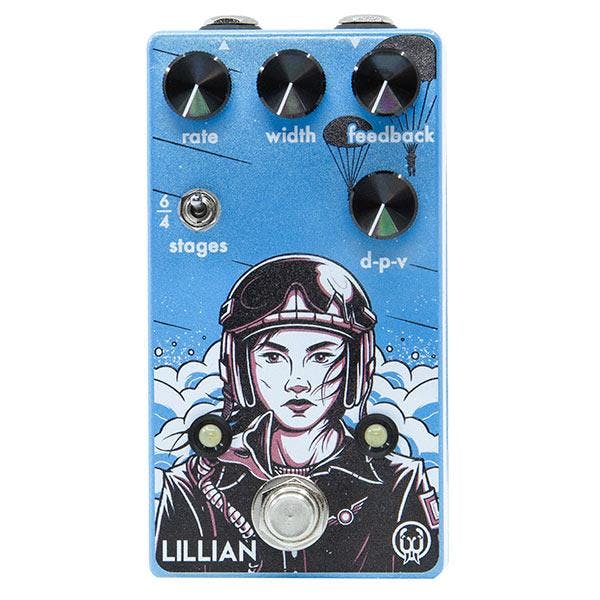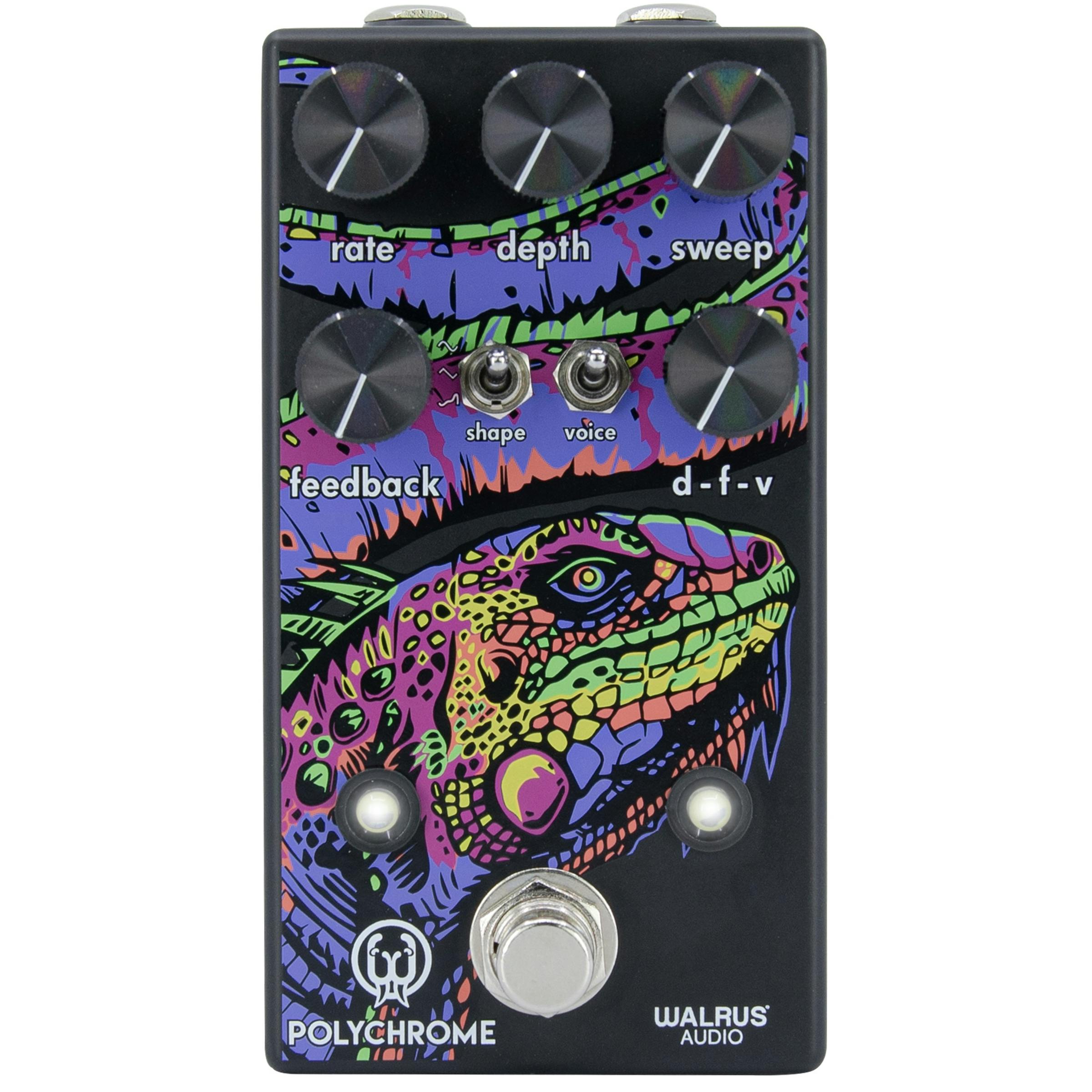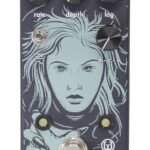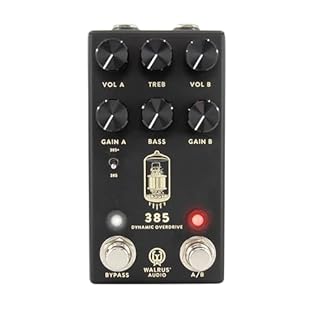Walrus Audio is an American boutique guitar effects pedal company based in Oklahoma City, known for its high-quality, innovative designs and artistic approach to pedal-making. Founded in 2011 by Brady Smith, the company quickly gained a reputation for creating pedals that offer a unique blend of rich, expressive tones and striking visual aesthetics.
Each Walrus Audio pedal is designed with meticulous attention to detail, often incorporating complex circuitry that allows for a wide range of sonic possibilities.
The pedals feature distinctive, hand-drawn artwork on their enclosures, making them visually appealing as well. Walrus Audio’s product lineup includes a variety of effects such as reverb, delay, overdrive, modulation, and more, and their pedals are widely appreciated by musicians for their creativity, durability, and superior sound quality.
Just Pedal Ingredients.
Analog — Analog pedals use real electrical components like transistors, diodes, and capacitors to shape your sound in a natural, organic way. They respond to your playing with warmth and character, often adding a touch of unpredictability that feels alive. Think of analog tone like cooking over an open flame — rich, dynamic, and full of subtle flavour that digital precision can’t quite replicate.. Audio. Chorus — A chorus pedal works by splitting your signal, slightly delaying one part and modulating its pitch before blending it back with the original. The result is a rich, shimmering tone that feels wide and fluid, almost as if several guitars are playing together in unison. It’s an effect that can add life and movement to your playing, making clean tones sound lush and dreamy or adding a subtle shimmer to warm overdrive.
From the classic 80s shimmer heard on countless records to modern ambient textures, the chorus effect remains timeless. Whether you want a gentle swirl for rhythm parts or a deep, detuned wash for atmospheric soundscapes, a good chorus pedal brings space and dimension to your tone. It’s a staple on many pedalboards for its ability to transform even the simplest chords into something spacious and expressive.
. Pedal — Your pedal is like a signature dish for your sound — a flavour-packed creation that transforms the bland ingredients of your guitar into something unforgettable. Each one adds its own seasoning, texture, and heat, turning a simple meal into a feast of tone.
These tasty little boxes sit in a row, like plates on a buffet, letting you mix and match flavours as you play. With one tap of your foot, you can swap sweet for spicy, subtle for smoky, and serve up something completely new. From the comfort food of warm overdrive to the fiery kick of fuzz, from smooth jazz sauce to heavy-metal spice, pedals give players a full menu of options to express their taste. And just like with food — once you’ve tried one dish, you’ll want to sample them all.
Collecting, trading, and discovering new flavours soon becomes part of the joy of being a tone-loving gourmet geek with a guitar.. Stereo — A stereo pedal or setup splits your guitar signal into two separate outputs, allowing you to create a wide, spacious sound when run into two amps or channels. Effects like chorus, delay, and reverb sound especially lush in stereo, as the modulation or repeats can bounce between left and right channels for a three-dimensional feel. It’s a popular choice for players who want to fill a room or studio mix with depth and movement that a single amp simply can’t produce.
Using stereo pedals opens up creative options for layering tones and building immersive soundscapes. You can pan effects across the stereo field, send clean and effected signals to different amps, or combine analogue and digital textures for a rich, dynamic sound. Whether you’re crafting ambient washes or creating a massive live presence, a stereo setup delivers clarity, separation, and a sense of space that transforms your overall tone.. Vibrato — Vibrato is an effect commonly used in music, particularly in guitar playing, that involves modulating the pitch of a note to create a wavering or trembling sound. It adds a dynamic and expressive quality to the music, enhancing the richness and depth of individual notes or chords. Here’s how vibrato works and some common features of vibrato effects:
1. **Pitch Modulation**: Vibrato effect pedals modulate the pitch of the guitar signal, causing it to oscillate above and below the original pitch at a controlled rate and depth. This creates a shimmering or undulating effect similar to the natural vibrato produced by a vocalist or instrumentalist.
2. **Controls**: Vibrato pedals typically offer controls for adjusting the rate (speed) and depth (intensity) of the pitch modulation. The rate control determines how quickly the pitch oscillates, while the depth control determines the extent of the pitch modulation.
3. **Waveform Options**: Some vibrato pedals provide options for selecting different waveform shapes, such as sine wave, triangle wave, or square wave. Each waveform shape produces a different character of vibrato, ranging from smooth and subtle to choppy and pronounced.
4. **Expression Pedal Compatibility**: Many vibrato pedals are compatible with expression pedals, allowing players to control the rate or depth of the vibrato effect in real-time using their foot. This adds a dynamic and expressive element to the performance, allowing for greater control over the vibrato effect.
5. **True Bypass**: Like many other effects pedals, vibrato pedals may feature true bypass circuitry to ensure that the pedal does not color or degrade the guitar signal when it’s not in use. True bypass preserves the tone and integrity of the instrument’s sound when the pedal is bypassed.
6. **Blend Control**: Some vibrato pedals include a blend control that allows players to mix the wet (effected) and dry (unaffected) signals. This enables subtle blending of the vibrato effect with the original guitar signal, preserving clarity and definition while adding depth and texture.
7. **Vintage vs. Modern Voicing**: Vibrato pedals may offer different voicing options to emulate the characteristics of vintage vibrato effects or provide more modern and versatile tones. Vintage-style vibrato pedals often replicate the sound of classic amplifier vibrato circuits, while modern pedals may offer enhanced features and flexibility.
Overall, vibrato pedals are versatile tools for adding movement, texture, and expression to guitar tones. Whether used subtly to add warmth and depth to clean passages or dialed in for dramatic pitch modulation effects, vibrato pedals offer guitarists a wide range of creative possibilities for shaping their sound.. Walrus.

